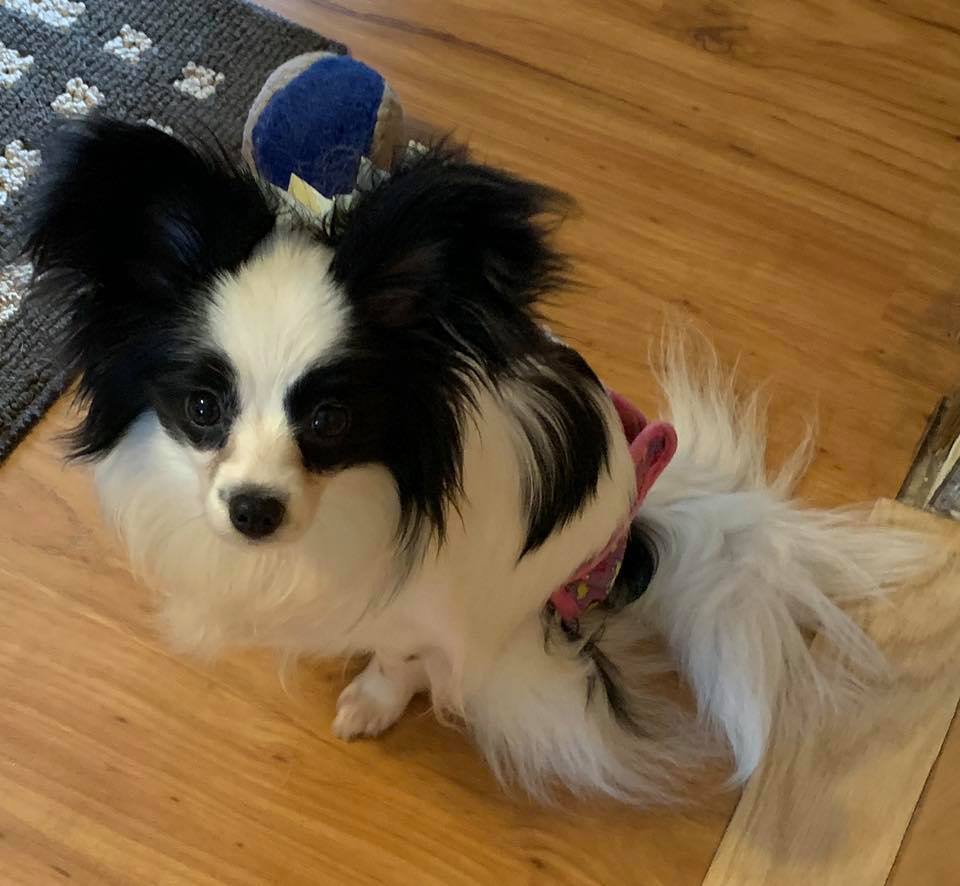
Papillon Care
Appearance and behavior
Papillons are very intelligent and self-assured dogs that have a very easy time learning new tricks. These dogs can be sociable with children and strangers, but are generally reserved around new people. They can also be socialized to get along well with other pets, but care should be taken with rambunctious pets or cats with claws, as they may injure them. If not properly socialized, Papillons can be distrustful and exhibit aggressive tendencies toward other dogs and people. Papillons may also be very playful and affectionate. Widely known as great companion dogs, they have the spirit and energy to keep up with active families, but can also be calm enough to be happy with sleeping in the arms of an equally affectionate owner. Due to their high energy level, they demand an augmented exercise routine, relative to the average companion breed. Papillons are known as excellent watchdogs, as they will alert their owner to changes in their environment. They may be considered garrulous like many other toy dogs. They can withstand heat, but are more sensitive to cold temperatures because of their single-coated fur, and should not be left outside unattended in cold weather.

The most iconic aspect of Papillons are their ears, which are large and well fringed, giving them a butterfly-wing-like appearance. Papillons are particolored or white with patches of any color. An all-white dog or a dog with no white is disqualified from the conformation show ring. A blaze (area of white extending down between the eyes) and noseband is preferred over a solid-colored head, but not required. Nose, eye rims, and lips should be black. Paw pads vary in color from black to pink, depending on the coloring of the dog.
Papillons can be registered with the American Kennel Club as the following colors and markings, with types for show purposes indicated with S for standard or A for alternate:
| Colors | Colors | Colors | Markings |
|---|---|---|---|
|
|
|
|
The American Kennel Club breed standard indicates a conformance fault that may be penalized: failure of the non-white color to cover the front and back of both ears and to extend from the ears over both eyes. Not penalized are a slight extension of the white collar onto the base of the ears, or a few white hairs interspersed in the color – as long as “the butterfly appearance is not sacrificed”

Two ear variations of this breed are seen, the completely upright ears of the more common Papillon, and the dropped spaniel-like ears of the Phalène. The Phalène are likely a throwback to their spaniel ancestors.
Temperament
The temperament of Papillons is that of a happy, friendly, adventurous dog. They are generally neither shy nor aggressive. Papillons can make excellent family dogs, but should be watched around little children, as should any dog, due to a small child’s lack of understanding of a dog’s behavior and the likelihood that they will do something to upset the dog. Given the intelligence of Papillons, they require rigorous training and mental stimulation to prevent behavioral issues arising from boredom.
Health
Papillons have only minor health concerns, although patellar luxation, seizures, and dental problems can be issues. Additionally, they can be at risk for progressive retinal atrophy, intervertebral disk disease, and allergies.
Exercise
Play will take care of a lot of their exercise needs; however, as with all breeds, play is not sufficient for all exercise. Daily walks or runs are an excellent way to exercise a Papillon. They also enjoy a good romp in a safe open area off leash, such as a large, fenced yard. Papillons are a very active breed of dog and enjoy having a job to perform. Papillon breeders recommend dog agility, rally obedience, or obedience training for Papillons because of their intelligence and energy level.
